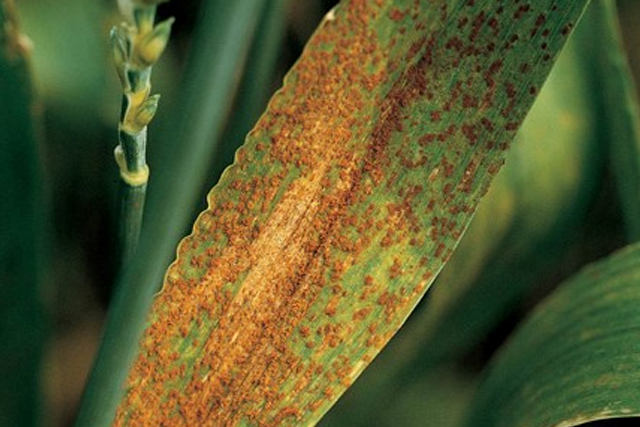
It is common knowledge that the droplets spread from sneezing are one of the key culprits responsible for transmitting infectious diseases between humans. Now it turns out that some plants have a similar ability to share the "love" and spread pathogens to each other. However, while sneezing in humans is an involuntary response to irritants along the lining of the nose, plants "sneeze" due to a quirk in fluid dynamics.
A research team, led by Virginia Tech Assistant Professor Jonathan Boreyko, stumbled upon the discovery while studying the wheat plant's ability to discharge spores of the wheat leaf rust. Caused by the Puccinia triticina fungus, the disease, which affects wheat, barley, and rye plants, can be devastating to farmers, leading to as much as a 20% yield loss. The impact is exacerbated by the dying leaves, which act as fertilizer for the fungus.
For their experiment, Boreyko's team inoculated some wheat plants with the wheat leaf rust disease. They then placed a few drops of water on the leaves to simulate dew. Observing the reaction through a high-speed microscope, the researchers noticed that the wheat leaves' highly hydrophobic, or water repelling, surface caused the droplets to instantly merge.
When the dew drops touched, they released kinetic energy, which caused the water to leap, or "sneeze," into the air, several millimeters off the leaf's surface. The flying liquid either fell onto the nearest neighboring plant or was carried to others by the breeze. The researchers say the sneezing diseased plants were surprisingly efficient, launching up to 100 spores of the harmful wheat rust fungus per hour during a morning dew.

Boreyko says, "It's basically analogous to a human sneeze in terms of, you have a very fast and sudden expulsion of droplets that contain the disease or pathogen inside of it, and they get thrown away from the surface."
The team, who published their findings in the Journal of the Royal Society Interface on June 19, 2019, next plans to investigate what happens if the water-repelling properties of the wheat leaves are altered. Boreyko theorizes, "If we change the wettability of the leaves, so they're no longer superhydrophobic, now the dewdrops will be unable to jump when they grow. They'll just sort of cling to the leaf surface and not be jumping anymore." The team believes that if the treatment works, it could put an end to the plant "sneezes" and help slow down the transmission of the harmful disease.
Resources: mashable.com, sciencenews.org, scientificamerican.com
